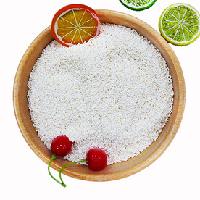-
Categories
-
Pharmaceutical Intermediates
-
Active Pharmaceutical Ingredients
-
Food Additives
- Industrial Coatings
- Agrochemicals
- Dyes and Pigments
- Surfactant
- Flavors and Fragrances
- Chemical Reagents
- Catalyst and Auxiliary
- Natural Products
- Inorganic Chemistry
-
Organic Chemistry
-
Biochemical Engineering
- Analytical Chemistry
-
Cosmetic Ingredient
- Water Treatment Chemical
-
Pharmaceutical Intermediates
Promotion
ECHEMI Mall
Wholesale
Weekly Price
Exhibition
News
-
Trade Service
Left: A three-dimensional schematic diagram of the cell nucleus, representing the classic DNA organization theory in the center
The periphery of the nucleus
If you open a biology textbook and browse images that describe how DNA is organized in the nucleus, you will likely start to feel hungry; the DNA strands look like a bowl of ramen noodles: long ropes floating in the liquid
This story began when Volk studied how mechanical forces affect the nuclei in muscles and found evidence that muscle contractions have a direct effect on gene expression patterns
To solve this problem, Dr.
Lorber and Dr.
This surprising discovery solves a basic biological problem-how the DNA in the nucleus of a living cell is organized
After working with Safran's team, they came to a conclusion that there was no error
The research team also explained why in previous studies by other scientists, chromatin seemed to fill the nucleus
To ensure that these findings are not limited to Drosophila muscle cells, Lorber and Amiad Pavlov teamed up with Dr.
Three-dimensional chromatin simulations show that the chromatin organization in the nucleus depends on the physical interaction between the chromatin and the nuclear layer
This research opens up a new way to study the structure of DNA in cells, and further studies the physical forces acting on the nucleus and chromatin, which affect gene expression
DNA and its chromatin packaging are thought to occupy 60% of the nuclear volume
Original search:
1.







